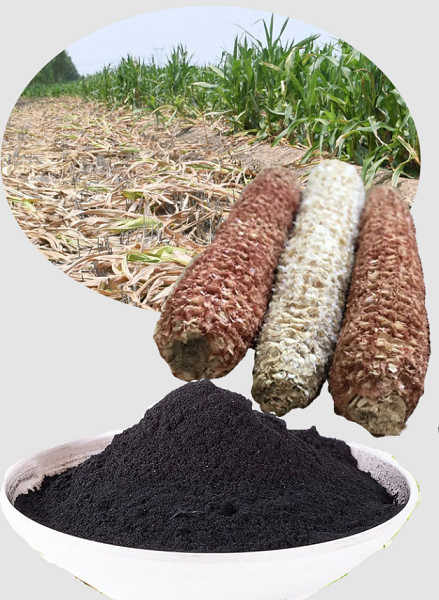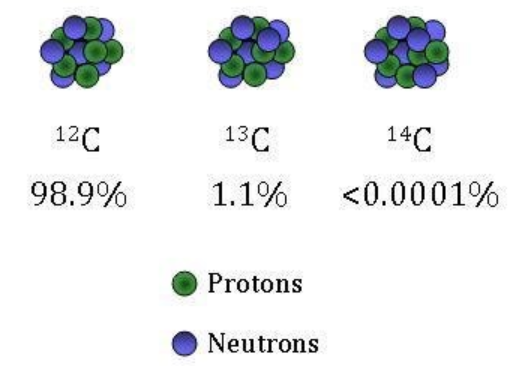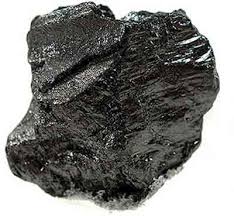How to Prepare Corn Cob Activated Carbon
Overview
Corn is one of China’s most important cereal crops. In 2020, corn accounted for almost 25% of the total cereal crops in China. The need for corn has recently increased, which causes environmental problems because merely the seeds are used as food and industrial raw materials. In contrast, corn cobs and cornstalk waste are discarded and burned. Corn cobs (CC) are essential inedible residues after corn production, comprising large amounts of corn residues in China each year, inevitably followed by the generation of large amounts of agricultural waste corn cobs due to the approximate 18 kg of corn cob per 100 kg of corn grain production[1].
Corn cob is a rich biomass resource, and many studies have been conducted on its various applications. Most agricultural residues can be treated as feed or compost, but corn cob cannot be used owing to its lack of nutrients. However, corn cob is a potential raw material that is locally available and practically used in the experiment, given its rich carbon content and vast abundance, where AC can be derived via pyrolysis.

The structure of corn cob
The structural component content of corn cob, i.e., cellulose (41% ), hemicellulose (36%), and lignin (6%), indicates corn cob is potentially and effectively used as a precursor for activated carbon production, the ash content contained in corn cobs is also relatively low at 1,50%. The carbon content of corn cobs is 80.50%, and low ash content is also an advantage of corn cobs from other biomass for activated carbon production because of the greater carbon content than the ash content.
Preparation method
Activated carbon is identified as a surface area increment and highly absorbs impurities. Water treatment using activated carbon is more economical because it is made from natural ingredients or biomass. Chemical activation uses 5% KOH as an activation agent and is heated by microwave irradiation with various output power of 360 watts, 450 watts, and 720 watts.
Method 1
The activated carbons are specifically prepared from corn cob using KOH as an activation agent in chemical activation. Pre-carbonization, chemical activation, and microwave irradiation are the three main processes in activated carbon production. The initial process of activated carbon production is cleaning the corn cobs from sticking dirt and then cut it 5 mm pieces. The pieces of corn cob are precarbonized at 200 ℃ for 4 hours in an electric oven. The pre-carbonized corncob is then mashed using mortal and sieved to obtain the self-adhesive carbon grain (sacg) with grain size fewer than 100 Mesh. The chemical activation is processed using KOH to the tune of 5% of the mass of the sacg in 150 ml distilled water. The slurry is stirred at 400 rpm for 25 hours at room temperature. The samples are then irradiated using a microwave for 15 minutes at various output powers of 360 Watts, 450 Watts, and 720 Watts. The activated carbon obtained is washed several times using distilled water. After the pH of the solution reaches neutral, the activated carbon is dried at the temperature of 105 ℃ for 24 hours [2].
Method 2
The corn cob was soaked in ethyl alcohol for 5 days to remove impurities. After drying, the corn cob was soaked in 10% sulfuric acid and heated at 170℃ for 48 hours in an FCF reactor kettle to obtain the intermediate product. Mixing the intermediate product with potassium hydroxide at a mass ratio of 1:2, the mixture is heated in two steps in an OTF-1200X tube furnace with argon. The first step was increased to 400℃ at 10℃ min-1 and kept for 30 min. In the second step, the temperature rose by 10℃ min-1 up to 800℃, which was held for 1 h. After cooling to room temperature, the final product is thoroughly washed with 2 mol L-1hydrochloric acid, deionized water, and absolute ethyl alcohol. Then, it is dried and placed in a bottle for later use [3].
References
[1] R. Farma. “Corn cob based activated carbon preparation using microwave assisted potassium hydroxide activation for sea water purification.” Journal of Physics: Conference Series 55 1 (2018).
[2] Xiaoxue He. “Optimization of activated carbon production from corn cob using response surface methodology.” Frontiers in Environmental Science (2023).
[3] Zhiyuan Liu . “Preparation, characterization and application of activated carbon from corn cob by KOH activation for removal of Hg(II) from aqueous solution.” Bioresource Technology 306 (2020): Article 123154.
You may like
Related articles And Qustion
See also
Lastest Price from Carbon manufacturers

US $6.00/kg2025-04-21
- CAS:
- 7440-44-0
- Min. Order:
- 1kg
- Purity:
- 99%
- Supply Ability:
- 2000KG/Month

US $3.50/kg2025-04-18
- CAS:
- 7440-44-0
- Min. Order:
- 1kg
- Purity:
- ≥99%
- Supply Ability:
- 300tons/month





